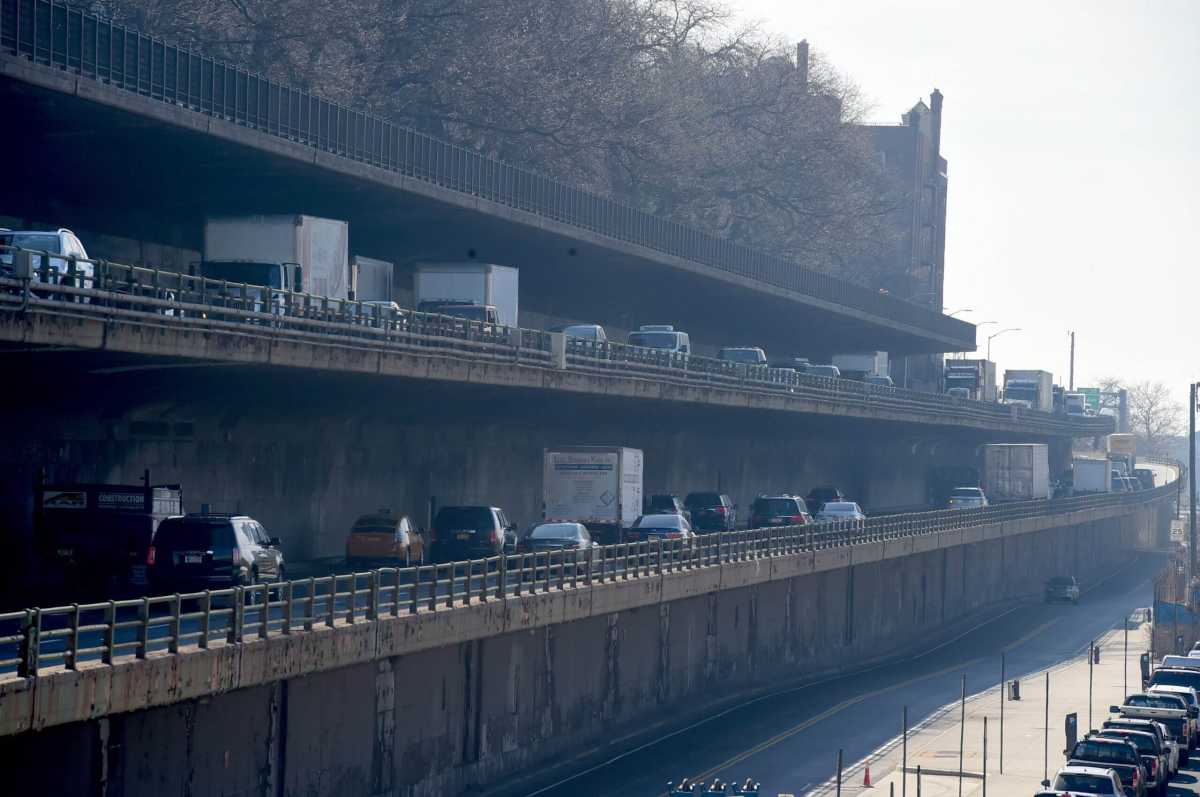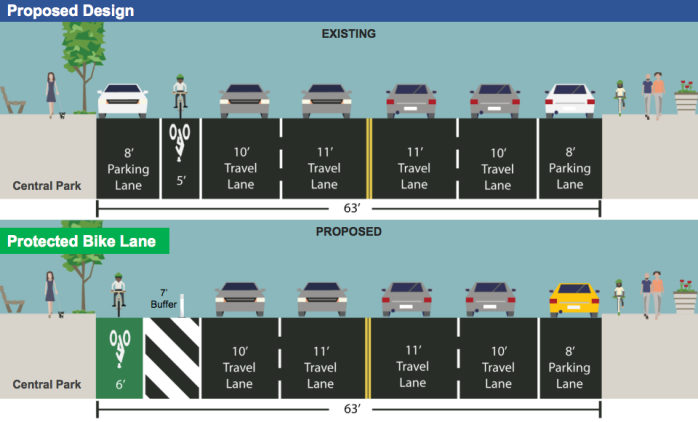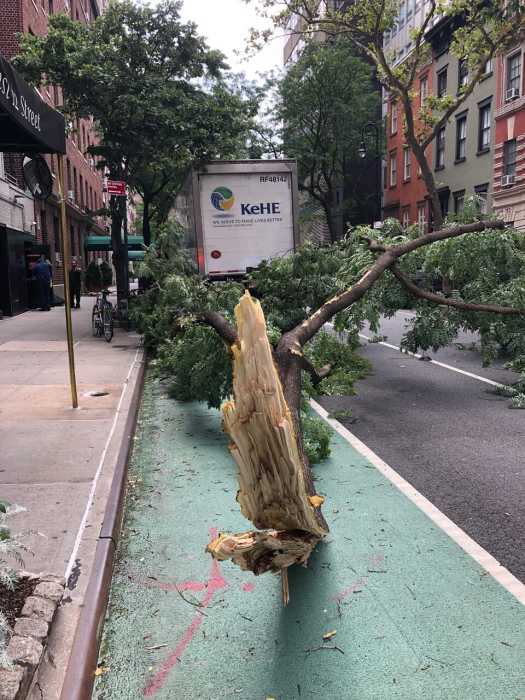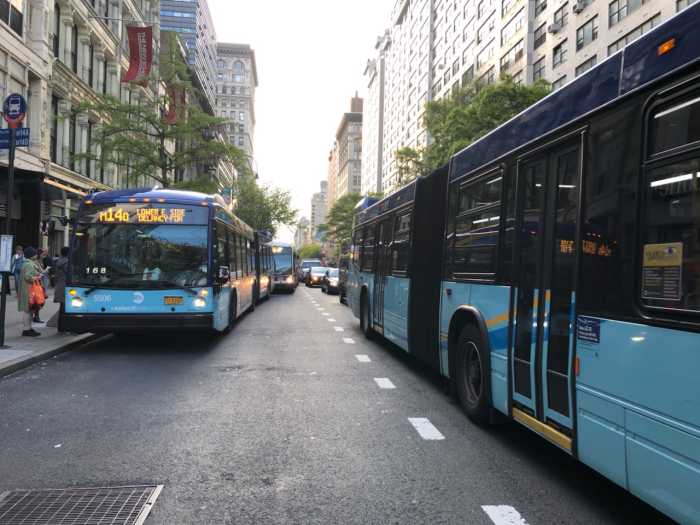The city won’t start using new sensors to catch and fine illegally-overweight trucks on the crumbling Brooklyn-Queens Expressway until the end of the year, according to the Department of Transportation.
A bill in the state legislature to launch a pilot program for so-called weigh-in-motion (WIM) technology to be deployed on the triple-cantilever section around Brooklyn Heights was signed into law by Governor Kathy Hochul on Dec. 22, but DOT spokesperson Vincent Barone told amNewYork Metro the new system will be in place by the end of this year.
“We are working to begin our weight-in-motion pilot on the Brooklyn-Queens Expressway as soon as possible. This critical project will help preserve the BQE’s triple cantilever and advance our goals for a more sustainable freight network,” said Barone in a statement.
Trucks cause outside damage to the BQE and curbing the heavy haulers has become an essential tool officials hope to use to extend the deteriorating highway’s lifespan.
The head of the local Brooklyn Heights Association called on DOT to put the pedal to the metal on the project, citing as a warning the collapse of a bridge in Pittsburgh Friday, a structure that was 18 years younger than the 68-year-old BQE.
“Last week’s terrifying bridge collapse in Pittsburgh should have caused everyone who understands the condition of the cantilever to lose sleep. I urge DOT to move as fast as possible on this effort,” said the civic group’s executive director Lara Birnback. “Keeping overweight trucks off of the BQE Cantilever should be one of DOT’s most urgent priorities.”
Politicians have pushed for WIM technology on the BQE for at least two years, and former-Mayor Bill de Blasio in August included the weight sensors as a key part of his plan to keep the BQE going for another two decades until officials figure out a more longterm fix.
According to an expert panel convened by de Blasio to study the BQE in 2019, daily truck traffic was more than 15,000 out of 150,000 total vehicles, and data showed that 11.1% of the heavy haulers exceeded the 80,000-pound legal limit, with some weighing more than double that amount.
There was a “lack of effective enforcement to prevent oversized and overweight trucks from using a roadway that was never intended to handle the load,” the report found, urging the automated enforcement and more police to keep an eye on the big rigs.
“There are extremely overweight trucks barreling down the triple cantilever every single day that are a hazard to the health and safety of our community,” said local Council Member Lincoln Restler.
“We need this new weigh-in-motion technology implemented, we need these new weigh-in-motion sensors installed as quickly as humanly possible,” the pol added.
Albany lawmakers for the area — Brian Kavanagh in the state Senate and Jo Anne Simon in the Assembly — introduced a bill after the report’s release to allow the city to install the WIM technology and enforce violators on the BQE between Atlantic Avenue and Sands Street.
The bill was bypassed twice during COVID-era state budget negotiations and it took until late 2021 to make it to Hochul’s desk for approval.
The automated system is a pilot program and the first-of-its kind in the nation, according to the bill’s sponsor in the lower chamber, who said she wasn’t surprised by the schedule.
“It’s a complicated thing. I always knew it would take about a year to get set up,” said Assembly Member Simon.
The city agency has 60 days to get an agreement with the state Department of Transportation, which controls highways.
NYC DOT already has sensors on the BQE, but needs to upgrade them to make them more accurate and connected to enforcement mechanisms, according to Barone.
The Department of Finance still has to set the fines, which can’t exceed $1,000 per violation, per the law, and there will be a 90-day grace period once the system is set up.
The city DOT previously installed WIM sensors at three sites to measure truck weights, including at the Alexander Hamilton Bridge between upper Manhattan and the Bronx in 2014 and two more in Queens in 2016.
Almost 7% of trucks crossing the uptown span were overweight, DOT found.




































